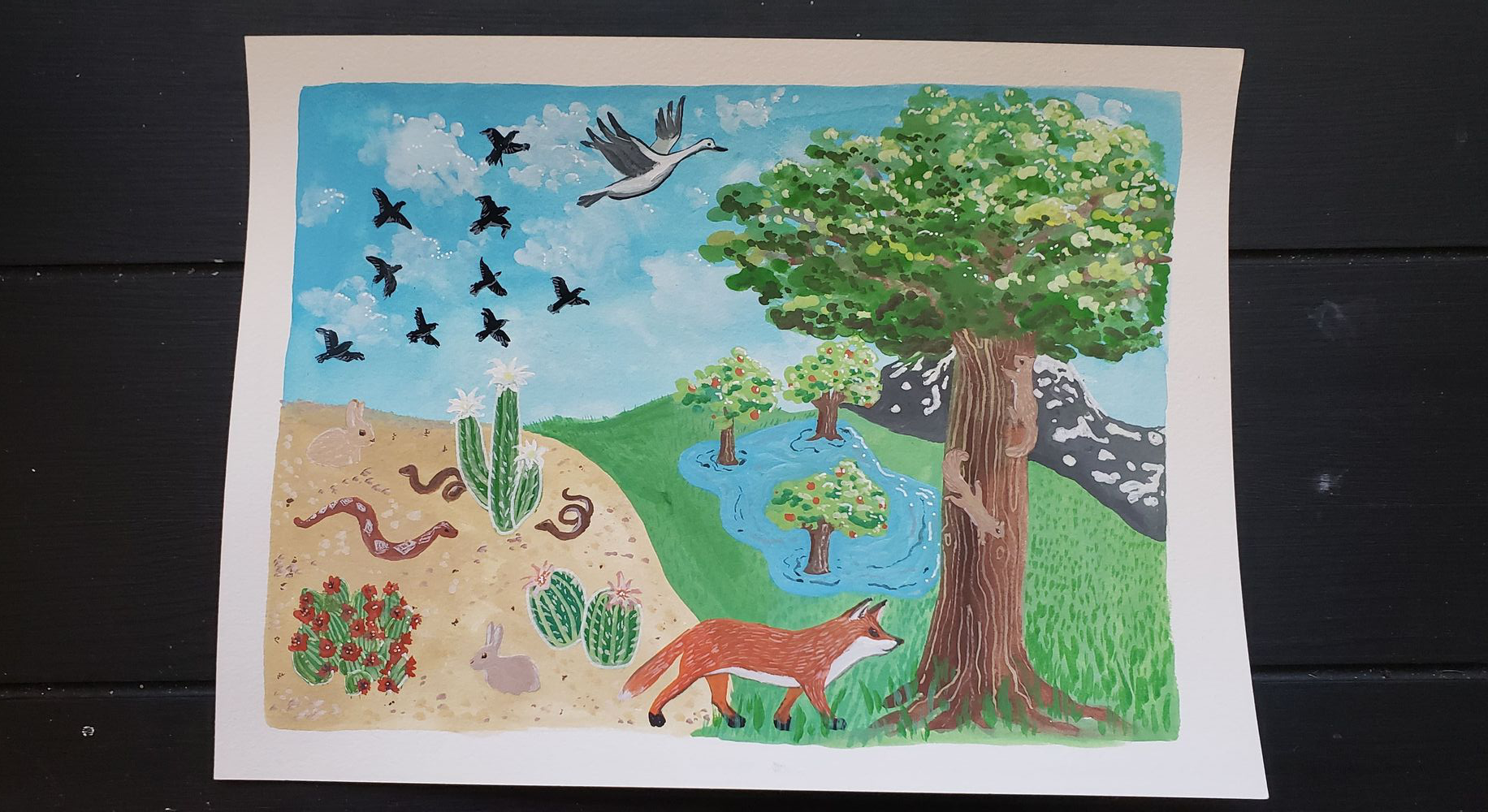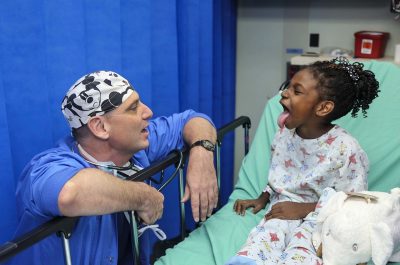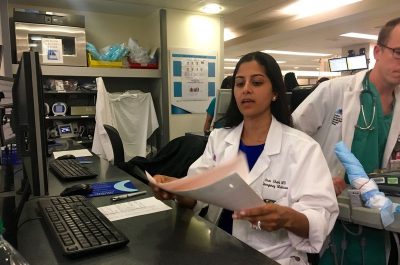On April 14, ISeeChange founder and CEO Julia Kumari Drapkin, community member Kathlean Wolf and researcher Tom Herrington joined Science Friday for a livestream conversation to celebrate Citizen Science month. We didn’t get to answer every question during the webinar, so we wanted to add some more answers here.
Answers have been edited for brevity and clarity.
Q: Is there anything really “noticeable” with climates since the global downturn? -Nancy
A: Yes and no (it’s complicated)
Sam Harrington, ISC Digital Community Manager: The most noticeable change for most communities has been improved air quality as car traffic decreases. I thought this article had important insights. Experts are predicting a 5% reduction in annual emissions this year. That’s a pretty low number for all of the individual actions we’re taking that are reducing our personal emissions right now. For comparison, the story notes that to hold warming below 1.5°C, we need annual reductions of 7.6%. A wholesale restructuring will be needed to significantly reduce our carbon emissions.
It may seem counterintuitive, but some air pollution has a cooling effect on the planet. Aerosols, or particulate matter that comes from burning (think smog), can block sunlight. Researchers think that without that particulate matter, global warming would be even more pronounced – up to 1.1°C warmer.
Kathlean Wolf, ISC community member, master naturalist and advocate for people with disabilities and for low-income communities in Madison WI:
There are three major things that changed when parts of our economies shut down.
- 1. Air quality at the ground level improved: This will certainly help the millions of people who suffer from pre-existing lung ailments, such as COPD and asthma. We tend to overlook the number of people who die every year as a direct effect of air pollution.
- 2. CO2 emissions decreased: The sad truth about CO2 emissions is that, for all the promises made at the Paris Climate Conference in 2016, and all attempts made before that, emissions of CO2 have increased every single year since we began keeping records in 1959. The instant the economy starts up again, the likelihood is that that record will continue.
- 3. With less pollution, more sunlight is hitting the surface of the planet. So what I’m curious to see is if the temporary clearing of the cirrus clouds will bring us closer to an ice-free Arctic. This is one of the “feedback loops” that climate scientists have feared for decades.
Q: Is it possible to interpret climate on a human scale when it most likely operates on a universal scale?
-Jan
A: Yes!
From a communications perspective, people relate most to stories told at a human level. The big picture of climate change can feel both too much to comprehend and too nebulous. When you can hear stories about how climate change is affecting someone you know or someone who lives in an area with similar challenges to you, those stories make the big picture smaller and more tangible. So certainly climate change will affect everything, but it is important to dive into the human side.
– Sam
I’d add that it is MORE important to do it on the human scale because the global changes are felt everywhere UNIQUELY- unique to your demographic, your zipcode, your particular backyard. No one town or no one person will experience the stress in the same way. Solving for climate change requires us to understand those differences -that’s why we do ISeeChange.
– Julia Kumari Drapkin, ISeeChange founder and CEO
It’s all too huge for any one person to get their arms around the big picture, even climate scientists. What really matters is the human scale. People like to think they can control their lives, but this pandemic is just one more message to let us know; it isn’t always true. As a child, I often visited the Timpanogos Glacier, an hour from my home in the foothills of the Wasatch Mountains in Utah. While some deep ice remains beneath the talus slope of the mountain, the glacier essentially disappeared in 2003. I was shocked when I read about the death of that great, unchangeable landmark of my youth. I have seen forests begin to die in the west, due to an increase in wood-boring insects that survived through too-warm winters. I despaired as the desert conditions of the West seemed to follow me to Wisconsin in 2012. I’ve seen fewer thick, heavy snows in some of the 7 states I’ve lived in; and deeper snows in other areas, driven by the increased water in the atmosphere. I’ve seen the wildfires of my childhood, confined to a few months every year in California, become a persistent feature throughout the year; and those fires no longer confine themselves to the fire-friendly landscape of California and the Sierra Nevada Mountains. Human lifespans are all we can truly wrap our minds around. If we look for hope on a planetary scale, there is all the hope you could ever need; Earth has seen five Mass Extinctions in the past, and other, smaller events that threatened life on our planet. Life is persistent. If anything, we are just lucky to have the knowledge necessary to imagine beyond our small, human lifespans; unlike our pre-scientific and pre-literate ancestors, we will always know that whatever catastrophes may befall our world in our lifespans, it is not the end of the world.
-Kathlean
Q: Have we been seeing “invasive” species increasing their range due to earlier springs, climate change? -Jeff
A: Yes
If they haven’t moved northward (or rather, pole-ward) yet, many species will do so. The species that are hardier in winter tend to be most invasive in places with a slightly warmer climate than the one found in their native ranges. One example is European buckthorn; it is the first to bud out in Wisconsin, and the last to drop its leaves, giving it a longer growing season than native plants. In most of the Northern States, and in the mountains, cold weather has been the limiting factor that prevented wood-boring insects from increasing in number. Without hard freezes, the overwintering larvae survived and thrived, and now we see huge stretches of pine forests killed by the hordes of thriving borers. Ticks are another arthropod getting a leg up from climate change. Ticks can transmit Lyme disease, Ehrlichia, Rickettsia, encephalitis-causing viruses, and more. A shorter winter means ticks become active sooner and start breeding earlier. A typical female tick may be able to increase the amount of offspring by a 30% or more.
Mosquitoes carrying malaria, dengue fever, Zika, West Nile virus, and other diseases previously confined to the tropics are moving north as well.
On the flip side Bumblebees tend to stay where they are born, rather than migrating–even when the heat might cue them in that their environment is changing. They fit into a category of creatures that scientists are debating giving a “helping hand.” We could attempt to artificially migrate bumblebees by taking them northward to locations where the temperatures are closer to what the bees are evolved to live with.
– Kathlean
Q: What are the benefits to a community if a group of residents start posting to ISeeChange?
Communities are stronger together and discussing our collective experiences of weather and climate are an easy way to start or improve neighborhood dialogue. It can also be surprising what we do and do not notice about our own neighborhoods!
At ISeeChange, we notice when a group of people start posting and we leverage our networks to see if we can connect communities to resources or partners to learn more about your environment, how it is changing, and what we can do to adapt.
If community members begin to notice issues in neighborhood infrastructure, for example, it can be much easier to organize how to address problems as a group or how to collectively request help. It can also be useful to see what other people in a community are doing–big and small–to address acute shocks and long-term stresses. Additionally, the extra dialogue between neighbors can boost preparedness with stronger relationships during the next crisis.
-Julia
Q: How has the timeline of monarch butterfly migration been affected, both east coast and west (Rockies?)
This is a great question. We had a very early first monarch sighting this year on ISeeChange. It’s hard to say for sure how the timeline is changing, but spring migration is triggered by the population experiencing a certain number of cold days. Additionally, there are concerns that butterflies are having to make their summer homes further north thus making the migration path longer. I actually read an interesting story that noted that high CO2 levels may be making milkweed plants more toxic and dangerous for monarchs. The World Wildlife Fund put out a good report on monarchs and climate vulnerabilities.
-Sam
Some monarchs have adapted though– the Gulf Coast and Florida populations don’t migrate. This could be a way to survive if there are stable enough environments for them.
-Julia
Q: ISeeChange has been very effective in New Orleans with community collected flooding data. Are there other examples where ISeeChange data has helped decision makers? -Ramiro Diaz
We have been so thrilled to work in NOLA. It’s our longest-running local community project and is currently the one where we work most closely with the city and engineers to discuss problems, check stormwater models, and design solutions. Other community pilots have seen different approaches.
We are working to study extreme heat in the Boston area with the Museum of Science. Last summer they created urban heat maps that decision-makers in Boston, Cambridge and Brookline are incorporating into their thinking and planning.
In Ocean City, NJ the ISeeChange community alongside researcher Tom Herrington has gained a deeper understanding about what types of tides and rain storms (and combinations of the two) cause flooding in the community and this has given them resources to have more productive conversations with city leaders.
And we are kicking off work on a project with the City of Miami in which we’ll be working closely with the city to study flooding and potentially heat impacts!
-Sam
Q: What is your long-term mission? What would you like to achieve after gathering global observation data in the next several years? What directions do you use when analyzing gathered data (in other words what is your focus)? -Stoyan
The mission of ISeeChange is to connect people to each other and their changing environment to make solutions together. We’re working to create a neighbor-to-neighbor global movement that puts community voices and needs at the center of the adaptation process and generates better solutions to climate challenges.
To date, we’ve used ISeeChange data to improve infrastructure design and modeling and the key to that success has been whole communities working together on ISeeChange in specific locations to achieve a shared adaptation goal or answer a key question. In the coming years, we aim to scale that impact to the global ISeeChange community using new technology and features that generate insights on changes to the growing season, changes to flood patterns, changes to urban heat and health impacts, as well as changes to ecosystems.
If we collectively see changes, literally point to them together- that is the first step to taking action. We’d like to see communities start to share and track the solutions they are seeing too – stay tuned as our team grows what the platform can do in the coming year.
-Julia
Q: Are there really dolphins frolicking in the canals in Venice? -Judith
Alas, there are not.
-Sam
Q: Is there going to be talk about disabilities? The impact of climate change on people with disabilities.
The first thing I would say is that governments at all levels are not paying enough attention to the issue of climate change impacts on people with disabilities. This is going to be a cause of many preventable deaths.
Many disabilities make it harder for people to regulate their temperature, and heat can be especially hard on their bodies. Elderly people, people with MS and other autoimmune disorders, and people with limited mobility are far more likely to suffer from heat injuries, and may simply find it difficult to avoid being in the path of a natural disaster or climate-threat.
Most disabilities impact our mental health to some extent, because of discrimination, isolation, and the worries that come along with poverty. Brains are a physical organ, and when their structure or chemistry is messed up, it causes symptoms, just as diabetes or cancer cause symptoms.
As a person with a brain-chemistry disorder, and also a collagen mutation that causes joint deterioration, heat is extremely depressing for me, because my body doesn’t handle it well, and it makes it hard to get outside.
Then there are the sociological factors that increase the risks for people with disabilities. People with disabilities are more likely to be living in poverty. We can’t always work full-time jobs; when we do, we face discrimination of the sort that generally precludes entering higher-paying professions. There are, of course, exceptions, but discrimination in both employment and housing is rampant and largely goes unaddressed. This has enormous consequences that make us more vulnerable to climate-change events. Poverty immediately creates invisibility. It creates a lack of political power. What happens to us goes unnoticed in the halls of power, so the help we need doesn’t factor into disaster planning and climate adaptation designs.
City officials need to come to the people–poor people and those with disabilities often can’t go to them! Getting to a hearing at the Capitol of Madison involves driving up to a complex maze of buildings with limited parking; then making your way to the correct building in an area where City, County, State, and Federal governments are all packed in side-by-side; perhaps doing so using a walker, crutches, wheelchair, or motorized assistive transport; then communicating to a group of people who may not take your testimony or concerns seriously, because you’re not one of the white, able-bodied, economically “important” people of the community.
One major overlooked factor in my neighborhood is a disconnect in communication between “white” communities and “Black” communities. Oftentimes, warnings I receive about dangerous conditions such as an approaching hailstorm, or an influenza outbreak, don’t seem to reach my neighbors. Other times, they just don’t trust the “authorities” (all-white) when it comes to civil communications. Efforts made to bridge that communication gap are always based on the assumptions of the dominant culture, resulting in the same results; mistrust and failure to communicate.
Considering all of those factors first, look at the ways that this hits people with disabilities in any given disaster or change:
With the cost of housing, especially renting, we’re more likely to live in older buildings, built on the least-desirable land. This includes areas of excess pollution, such as “cancer alley” in Texas; on brownfield land with soil pollution; in filled marsh or river flood-plains, such as the Ninth Ward of New Orleans; or in the hottest, least-shaded areas of desert land in the Western states. My neighborhood, the poorest in Madison, Wisconsin, is built on old marsh land, and the water table is well above the bottom of the basement. There is always water on the basement floor, and mold grows there during the summer. When we had severe flooding in 2016, the level of water in the street rose up above the engine intake of my car and the vehicles of other people parked there, and many of us suffered the loss of “junker” vehicles. Poverty is expensive; a truck that’s only worth $1000 isn’t worth insuring for replacement, but it’s extremely hard to come up with the money to buy another junker and get it running.
People with disabilities are often more susceptible to heat-injuries such as heat exhaustion and heat stroke. Heat increases pressure on all the organs in the body, and a person dealing with issues such as diabetes or high blood pressure is far more likely to have a major life-threatening medical event if they’re forced to endure constant excessive temperatures. Heat stress is cumulative in the human body. Becoming overheated over the course of several days, the body essentially falls into “debt” relative to maintaining a normal internal temperature.
My apartment has a single small AC wall unit in the living room. Running this unit is the #1 expense for utilities all year long. Box-fans on the floor blow toward our bedrooms, and I mounted window-fans at the top of doorways to help push hot air back toward the AC unit. This usually circulates enough cool air back to my bedroom to keep it below 80 degrees.
I use night-time cooling religiously; the instant it’s cooler outside than inside, open up the windows and doors, run fans to draw in cold and blow out heat. Then close things up the instant it’s warmer outside than in. But nights have been too hot for this to work like it usually does–heat’s building up in the apartment and the attic above.
Last night, it never got cool enough to open the doors and windows. With the heat slowly creeping down from the attic, it rose to 85 degrees in my bedroom by 2 a.m., and it was still 88F outside. I finally grabbed a large ice-pack from the freezer, put it under my chest, and cooled down enough to sleep.
It’s depressing to think that this will be our future. I have a disability, and I’m really hurting today because I couldn’t sleep last night. How can I possibly stand it if there are long weeks of this every year in coming years? For someone who’s disabled, poverty doesn’t tend to get better–it gets worse, and my housing situation could get worse, my access to AC will end, and I’m not going to live through that.
Also, here is a picture of the frogs my daughter rescued from the window-wells of our building (they get stuck there and die), just before she took them over to the creek and set them free. Heat is depressing; a daughter carrying five frogs in her shirt, that makes me happy!
Once again, the overlap with poverty has dangerous consequences. During the summers, our building is inadequately insulated and the heat slowly builds up over the course of heat-event days. While other people drive to and from work in air-conditioned cars and move from air-conditioned homes to air-conditioned work places, we may not have any of those places available to cool off. Running older AC units is especially expensive, and without the insulation, much of that money seeps right out through the 60 year-old windows.
Due to the isolation that often comes with disability, people may sit in their overheating homes, making due the best that they can, and I fear that as time goes by, heat waves will claim untold lives in poor neighborhoods like mine. They won’t be reported as climate-change-related deaths; they’ll be written off as organ failure, heart attack, stroke, etc. But the actual impetus for those causes of death is one overarching factor: heat.
Our housing conditions must have mandated upgrades without accompanying increases in rental costs. We need to have outreach, people designated to check in on homebound individuals whenever there are extreme conditions of heat, flooding, cold, and so on.
It hardly needs to be said, but the biggest thing that could help people with disabilities during the years of extreme climate change is if we could build a truly inclusive society, where our unique gifts as people with disabilities are fostered and valued, and we aren’t at the furthest extreme of the wealth inequality.
-Kathlean




